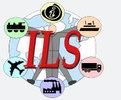
ILS 2012
Québec, Canada, 26 — 29 August 2012
ILS 2012
Québec, Canada, 26 — 29 August 2012

THEMATIC SESSION : Physical Internet Initiative
Aug 29, 2012 10:30 AM – 12:00 PM
Location: VCH-2880
4 Presentations
-
 10:30 AM - 10:52 AM
10:30 AM - 10:52 AMThe Impact of Standardized Physical Internet Containers on Shipping Volume
One of the key aspects of the Physical Internet (PI) is the use of standardized, modular containers that enable the coordination of shipments across the supply chain. However, a key open question is how will limiting the choice of containers impact the amount of volume that is shipped? We present a mathematical model to determine that impact and report our results for data sets that are based on data from a computer peripherals manufacturing company.
-
 10:52 AM - 11:14 AM
10:52 AM - 11:14 AMPotential of Routing Protocols for Freight in Open Logistics Networks: The Case of FMCG in France
Logistics networks intensely use means of transport and storage facilities to deliver goods all around the world. However they are still poorly interconnected and this fragmentation is responsible for a lack of consolidation and thus efficiency. To cope with challenging emissions targets, an improvement by an order of magnitude in supply networks is sought. This is the purpose of the Physical Internet. If from a logical point of view, this concept should im-prove efficiency by merging flows, no demonstration of its potential has yet been carried out based on real-world flows. To reach this goal, we used flows from the Fast Moving Consumer Goods sector (FMCG) in France and a model of interconnected logistics networks to simulate their routing. Unlike vehicle routing problems, flow routing is a new re-search field. Routing is therefore proposed based on a combination of knapsack algorithm to fill transportation means and of shortest path to minimize travelled distances. Various routing protocols and scenarios were tested and encour-aging results were measured according to sustainability indicators such as CO2 emissions, energy used, cost, lead-time, delivery time, and so forth. As this is a first work in the field of routing flows, the simulation model also suggests poten-tial improvements.
-
 11:14 AM - 11:36 AM
11:14 AM - 11:36 AMSimulating Physical Internet Enabled Distribution Webs
What if instead of packing products in pallets and boxes of different size, shapes and materials, they are packed in smart, standardized, and modular containers? What if these containers are the only unit loads dealt with by transportation systems and logistics facilities? What if the storage and distribution facilities, regardless of which com-pany they belong to, are open to receive, handle, and store containers from any other company? The Physical Internet suggests that if such a context exists, it enables a Logistics Web that will contribute to address the problem of the eco-nomic, environmental, and social inefficiency and unsustainability resulting from the way physical entities are currently moved, handled, stored, supplied, realized and used across the world. In this paper, we report on research aiming to enable the exploration of the potential of such a Logistics Web through simulation based investigation. The research is anchored around a collaborative French-Canada-Switzerland project aiming to assess the potential of altering the French distribution system for fast-moving consumer goods from its cur-rent state towards a Physical Internet enabled France-wide open logistics web. This web is notably comprised of an open mobility web and an open distribution web. Specifically, we focus on the design challenges associated with archi-tecting and developing a large-scale agent-based simulator enabling the French Logistics Web experiment.
-
 11:36 AM - 11:58 AM
11:36 AM - 11:58 AMModeling Scenario-based Distribution Network Design in a Physical Internet-enabled Open Logistics Web
This paper aims to propose a rigorous assessment, through an optimization-based approach, of the economic performance potential offered by the recently introduced Physical Internet regarding the design of distribution net-works. The paper describes the existing distribution network design context through the characterization of current closed and collaborative distribution systems. It also depicts the open and global Distribution Web, a key constituent of the Logistics Web to be enabled by the Physical Internet. The paper characterizes and models future business environ-ment with a set of scenarios taking into account various evolutionary paths of the world economic, environmental and societal future. Subsequently, it formally introduces a scenario-based distribution network design model, in a two-stage setting, to decide on the set of distribution facilities to open and their mission. First, a generic form of the model is provided and then, it is adapted to the closed, collaborative and open web contexts.